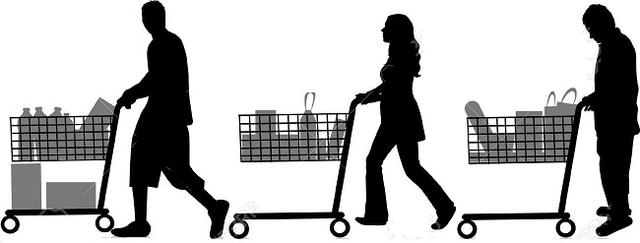Local Economies Benefit by Public Transit
Public transportation enables people without access to a car or who can’t drive to participate in the local economy — to reach shopping, dining, events, and services.
APTA American Public Transportation Association, January 30, 2017
One of the most powerful arguments in favor of increased investment in public transportation is its role in supporting and stimulating our economy.
Spurring Economic Development
Public transportation fosters economic development, real estate investment, and local job creation. Investments in the planning and construction of new public transportation projects provide a short-term economic stimulus but also lead to long-term, cumulative impacts on economic growth and productivity. Outcomes vary by region and project, but it’s estimated that a $1 billion public transportation investment over a 20-year period results in a $3.7 billion economic boost.
What does this boost look like? In regions across the country, public transit networks attract new businesses, residential expansions, office building development, recreation hubs, and sports facilities. In addition, a strong transportation infrastructure that includes public transit fosters the growth of business clusters.
A study of 300 U.S. regions concluded regions of all sizes benefit economically from investments in public transportation.
Cutting Costs
Investing in public transportation will reduce the enormous cost our nation pays for traffic congestion. In 2014, Americans spent an estimated 6.9 billion hours stuck in traffic, which represents about $160 billion in lost time and fuel costs — $960 per average motorist. By 2020, this could rise to $192 billion. Improved and expanded public transportation will enable us to limit traffic-related losses and make the general flow of commerce more efficient.
At the individual level, public transportation also benefits household budgets. Commuting to work via public transportation instead of driving in a private car provides an annual average savings of about $9,700 per person.
Economic Opportunity
It’s clear that public transit connects people to jobs and educational opportunities. Public transportation also enables people without access to a car or who can’t drive to participate in the local economy — to reach shopping, dining, events, and services. This includes seniors, youth, people with disabilities, and lower-income Americans.
Right now, Congress is focusing a lot of attention on creating jobs and lifting our nation’s economy. Public transportation provides an essential service to millions of Americans — and every American (not just riders) benefits from reduced air pollution, less congested roads, and increased local economic activity.
Public transportation isn’t just a service; it is an economic engine. This is a message Washington should remember as it turns its attention to revitalizing America’s infrastructure.
Public transportation serves a critical need, providing mobility for millions of Americans. And yes, for many people, it is the only option for reaching work, accessing medical care, and connecting with friends and family, all of which are public goods in and of themselves. But our elected leaders need to see the bigger picture — the picture in which public transit is a cornerstone of a modern transportation network that drives economic growth and community development nationwide.
Citizens Taking Action for transit dependent riders
Public transportation enables people without access to a car or who can’t drive to participate in the local economy — to reach shopping, dining, events, and services

